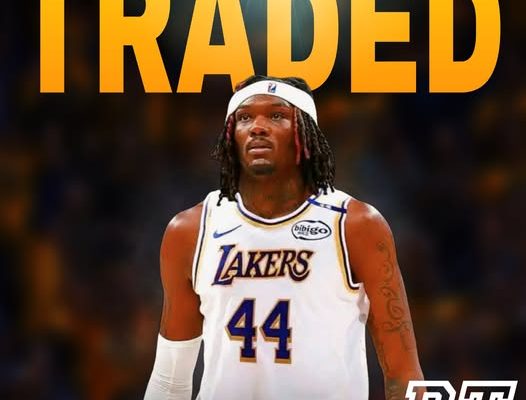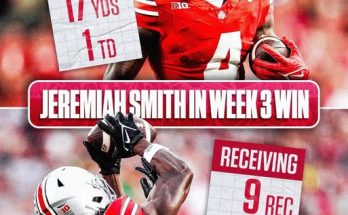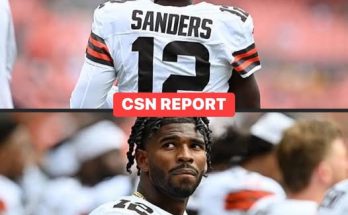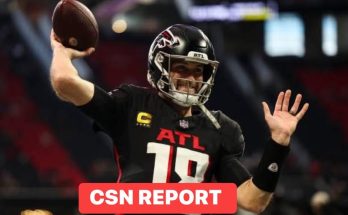BREAKING: Robert Williams III is on the move again, and this time he’s heading to Hollywood. In a bold, multi-player deal that sent shockwaves through the NBA landscape, the Los Angeles Lakers have acquired the 26-year-old defensive juggernaut from the Portland Trail Blazers in exchange for Maxi Kleber, Gabe Vincent, and a future second-round pick. This move signals the Lakers’ deepening commitment to revitalizing their roster around their remaining championship window while giving Portland additional rotational pieces and long-term flexibility as they continue to rebuild. While it’s not uncommon to see the Lakers pursue impact big men, especially those who complement their defensive schemes, bringing in Robert Williams III—known as “Time Lord” around the league—is a notable swing that speaks to their short-term goals and faith in the long-term upside of a rim protector who, when healthy, can be a game-changer.
Williams arrives in Los Angeles after a brief, injury-hampered stint in Portland, having come over in the 2023 Jrue Holiday deal that sent shockwaves through the league. Despite his limited time with the Trail Blazers, the upside has never been in question. When he’s on the court, Williams is one of the best shot-blockers and vertical spacers in the league, combining elite timing, long arms, and incredible agility for a big man. The Lakers, desperately needing to shore up their interior defense and diversify their pick-and-roll coverage schemes, clearly see Williams as a plug-and-play piece next to Anthony Davis or even as a solid backup anchor in units where Davis plays the four or takes time off the court. Given that Los Angeles struggled with interior defense whenever Davis sat last season, this move could be as much about managing AD’s workload as it is about increasing defensive intensity.
What makes this trade particularly intriguing is the Lakers’ willingness to part with Maxi Kleber and Gabe Vincent, two veterans who were expected to play pivotal roles. Kleber, acquired recently in a draft-week trade with the Mavericks, was thought to be a spacing big who could fit nicely alongside Davis. His perimeter shooting and savvy defensive rotations made him a theoretical asset for new head coach JJ Redick’s modern system. However, the Lakers’ brass seemed to feel that Kleber’s skill set was redundant given the emergence of younger players like Rui Hachimura and the presence of Jarred Vanderbilt, who’s expected to take on a larger defensive role. As for Gabe Vincent, the former Miami Heat guard was brought in last offseason with expectations of providing two-way grit and a playoff-tested presence off the bench. But a nagging knee injury derailed his 2023–24 campaign, and he struggled to gain traction when healthy. The Lakers’ front office seems to have made the calculation that his value—at least for now—was best used in acquiring frontcourt defense.
Portland, meanwhile, continues to make patient and strategic moves in its rebuild. By acquiring Kleber and Vincent, they not only get experienced veterans who can provide locker room stability for their young core but also players who could be flipped later for additional assets. Maxi Kleber, in particular, could become a hot commodity by the trade deadline if he regains form, as playoff teams are always searching for bigs who can defend and shoot. The second-round pick sweetens the deal and fits with Portland’s goal of asset accumulation. More importantly, the move likely reflects internal concerns about Williams’ long-term durability. Despite his tantalizing upside, he has struggled to stay healthy throughout his career. Portland’s front office may have simply decided that now was the time to recoup value before his market depreciated further.
For the Lakers, the timing of this trade is telling. It comes amid whispers of a potential “consolidation trade” designed to bolster depth while preparing for a bigger swing. Whether or not this move is part of a larger domino effect remains to be seen, but it undeniably makes Los Angeles a more intimidating defensive unit. Williams, when paired with Davis, creates the kind of shot-altering wall that could deter even the most aggressive of slashers. His ability to switch out onto guards, defend pick-and-rolls in multiple coverages, and block shots as a weak-side help defender gives the Lakers a level of defensive malleability they lacked last year.
There’s also a compelling offensive argument for this acquisition. Though Robert Williams isn’t known for his scoring, his elite rim-running, lob-catching, and screening can elevate the Lakers’ halfcourt execution. For a team that struggled to create easy looks last season, Williams’ vertical gravity could be a huge benefit for LeBron James and D’Angelo Russell. Pick-and-rolls involving LeBron and Williams might resemble the kinds of sequences James once ran with Tristan Thompson in Cleveland or JaVale McGee in early Lakers seasons. Even more exciting is the possibility of Williams operating as a secondary passer out of the short roll—something Boston briefly explored during his most productive seasons.
But perhaps the most critical element of this trade lies in the signal it sends to the locker room. The Lakers are not standing pat. After a second consecutive underwhelming playoff exit and significant speculation around the future of LeBron James, this move underscores the front office’s commitment to building a sustainable and competitive roster around him and Anthony Davis. Though LeBron has yet to sign an extension, all indications point to his desire to stay in Los Angeles and compete. Adding Williams may be the kind of move that convinces him the team is serious about another title run. Moreover, for Anthony Davis—who has publicly lobbied for more help in the frontcourt—this could be a welcome development that reduces the physical toll of nightly battles in the paint.
Financially, this trade doesn’t drastically alter the Lakers’ books. Williams is under contract through the 2025–26 season on a team-friendly deal, providing cost certainty and flexibility. His salary is manageable, and if he stays healthy, it’s a bargain relative to his impact. On the flip side, both Kleber and Vincent had contracts that could have cluttered the cap sheet without providing commensurate on-court value. The Lakers clear the path for younger players like Jalen Hood-Schifino and Dalton Knecht to receive more meaningful minutes while also addressing their most glaring defensive need.
Still, this move isn’t without risk. Robert Williams has played fewer than 45 games in three of his five NBA seasons. His explosive leaping ability comes with concerns about long-term knee and hip durability. The Lakers are betting not just on his skill, but on their ability to manage his body over the grind of an 82-game season and beyond. In that sense, their sports science and medical staff will play just as big a role in the success of this trade as Redick or the players on the floor.
In the broader context of the Western Conference, this move is a signal that the Lakers refuse to be outpaced by the likes of the Denver Nuggets, Oklahoma City Thunder, or the retooled Golden State Warriors. With the Clippers facing an identity reset, Phoenix reshuffling pieces, and Memphis trying to climb back into contention, every slight edge matters. By acquiring Williams, the Lakers add one of the few bigs in the league capable of swinging playoff games defensively. If he’s right physically by April, he could be the X-factor that tips a close series.
For Portland, while some fans may see this as another asset-flipping move in a seemingly endless rebuild, it also provides clarity. They are fully invested in the future of Scoot Henderson, Shaedon Sharpe, and Deandre Ayton. Williams, though a fan favorite and a great mentor when available, simply didn’t fit the timeline—or the health profile—of what Portland is trying to build. Vincent adds playoff experience and toughness, while Kleber fits the mold of the modern stretch big who can keep the floor spaced for Scoot’s downhill attacks.
Ultimately, the Lakers’ acquisition of Robert Williams III is a calculated gamble. It’s a bet on upside, health, and the idea that their championship core still has one or two more deep playoff runs in them. While it costs them depth and a draft asset, it also provides something they sorely lacked—an elite, flexible, defensive anchor who doesn’t need touches to make an impact. If things break right, this could go down as one of the smartest mid-offseason moves in recent Lakers history. If not, it’ll be another example of how narrow the margins are when trying to maximize a championship window. For now, though, Lakers fans have reason to be optimistic. The Time Lord is coming to L.A., and the clock may just be restarting on a title chase.



